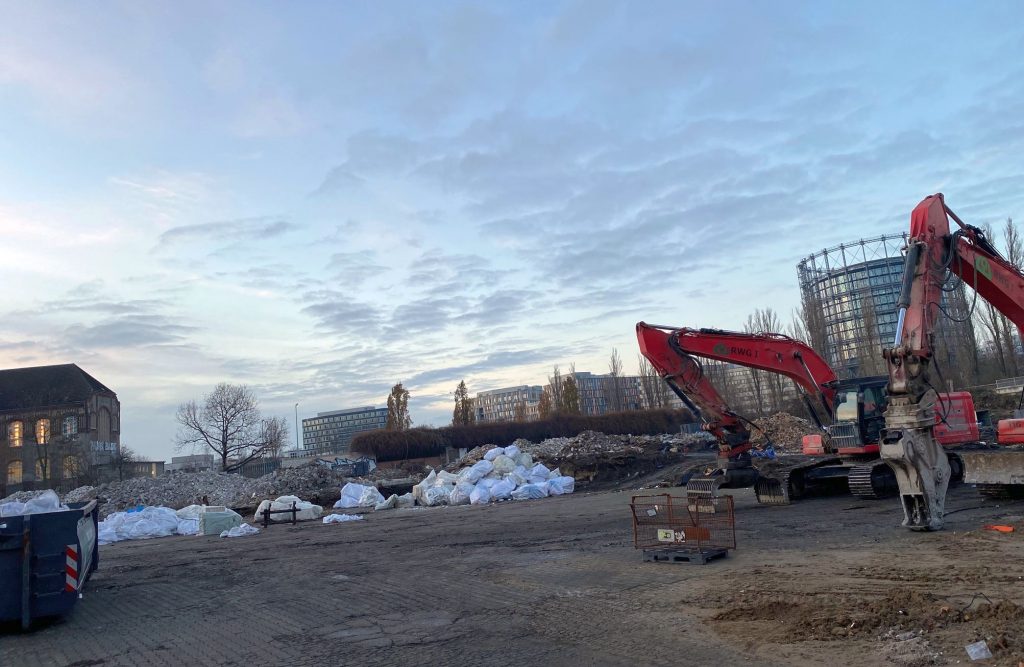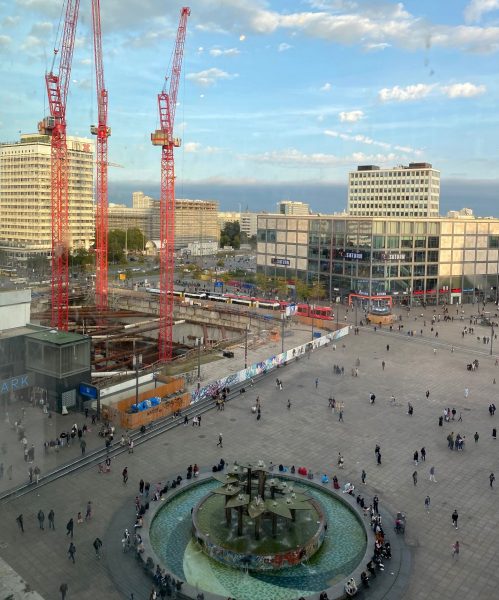The annual mortality statistics and special reports on suicidal tendencies are a tough reading. OECD Statistics give a at least an approximate, comparative perspective. Reporting routines and medical confirmation of a suicide or suicidal behavior still vary quite a bit between countries. Nevertheless, the usually reported incidents per 100.000 persons remain rather abstract.
Absolute numbers speak a clear language. For example in Germany there were about 10.300 recorded suicides in 2023, France had to mourn about 9200 in 2022. To put the size of the problem in perspective it is helpful to know that in Germany all other not aging related causes of death like traffic accidents, drugs or murder make up for around 7.000 deaths per year. The targeting of resources and prevention efforts on these vulnerable people seems inevitable. However, we see only limited additional efforts to curb the problem.
A more detailed analysis of the frequencies reveals the gender and age differences. More men commit suicides and older (very old) people have higher risks. The oldest age group of men is most at risk.
Since the Covid-19 pandemic young women show rising trends in many countries again of suicidal attempts and self-inflicted wounds. Despite a continuing effort of research (Links) there is no single cause to explain the occurrences.
As a working hypothesis, which awaits empirical tests, I would look into societal factors that stigmatize persons who are made to believe or feel like they are beyond the normal spectrum of society. The lack of acceptance of diversity concerning gender, age, ethnicity, body shapes or mental states like anxiety. Poverty might cause immense distress and suffering. Large shifts in wealth in both directions cause additional risks.
It seems as if our minds and society are constantly in a kind of „regression towards the mean“ posing challenges to those furthest away from the average or perceived norms. Percentile ranks or percentile scores are commonly used to express a person’s position in a frequency distribution. For example you are better/lower than 90% of persons of your age group. Such statements might cause further distress for persons. However, summarising across several (psychological) measurements, they may yield encouraging indications as well. Actual and perceived positions in such percentile ranks add another “social risk” as perceived positions may govern behavior. 
Election Participation Bundestag
The election of the German Bundestag 2025-2-23 has brought about many changes to the 1st chamber, the national parliament. First the voting system had changed to limit the newly elected parliament to 630 seats for a total of about 60 million people entitled to vote. 50 million voted in the election. The national average of participation in the election reached a very high 82.5%, with a range from 73.5% to 88%. Overall, it has been the highest participation rate since reunification. Political parties have to pass a barrier of 5% to be eligible for seats in the Bundestag. This regulation had been installed to avoid too many small parties to enter the Parliament as coalition building could be rather difficult and lengthy.
2 political parties missed this barrier closely, one with 4,3 % and another one with 4,97% of votes in the so-called 2nd vote, which is the vote for proportional representation in parliament after which the seats are allocated. Adding those ballots casts together, this means that for these 2 parties about 4.5 million votes do not get any representation at the national level. Several other smaller parties add more than 1 million votes, which are finally without any national representation. However, the only regionally campaigning conservative party from Bavaria reached 3 million votes (6% of votes) on the national level, which gives them a representation of 44 seats in the Bundestag.
Participation across age groups follows a relatively constant pattern. Older votes 60+ have relatively high voter turnout, whereas the younger age groups do not use the chance to vote as much as other age groups. This remains a challenge for democratic representation. The youngest have the longest time spell to live with the consequences of democratic representation and resulting policies. There are useful debates to lower the current legal age (18) to 16 years of age for voting to soften the effects of aging societies voting. Children, or currently anybody under 18, have no impact on political representation. An overweighting of families with children might fix such deficits. If the number of children drops further, we might eventually be willing to give our future a stronger voice in political elections. (Image: empty Berlin playground 2025)

Aridification
Man made climate change and local policies increase speed of aridification (Link). It is not only the Sahara desert that is spreading out, but the lake Aral is another horrible example of the disrespect mankind attributes to its own resources of living. As more regions become arid due to our faults and long term consequences of industrialization we provoke human resettlement of an increasing scale. Water resources are and have been for centuries the major reason for people to settle nearby. Aridification of the soil like in California increases the risks of wild fires. The costs associated with aridification are very high and such areas can no longer be insured through normal private insurers. In most cases poor people or countries are affected the most, but we are all likely to bear the consequences in one way or another. We will have to accept that the size of habitable areas on earth decreases while the peek demography of humans is still at least a decade away from now. Not to tackle aridification is not an option. When shall we ever learn? (Image: sketch for Hagar and Ishmael in the desert, by Navez 1819, MRBAB) 
Animal Longevity
- From time to time it is interesting to study animals from many species to maybe learn from them about longevity. Roberto Salguero-Gómez (LINK) developed a sociality continuum and compared 152 species across 13 taxonomic classes. The study reiterates and generalizes the many studies of single species and finds that „more social species live longer, have more generation time and longer reproductive windows“. Social structures amongst animals of the same species influence survival and reproduction as basic demographic processes. These processes determine to a large extent the size of animal populations. Sociality appears to be a major contributor to longevity compared across species. These processes determine the survival of rather solitary species like panda bears (running higher risks of extinction) compared to populations of bees with rather hierarchical predefined social structures. The spotted hyenas developed cooperative hunting and communal care which allows for effective survival compared to other species. Sociality is specific to species and therefore largely determined by genetic factors. Nature rather than nurture is at work. However, species where reproduction occurs later allow for learning curves of sociality. In other words even within species there is scope to improve longevity through sociality. Migration patterns or experience with migration might be yet another determinant of survival or longevity as climate change poses new challenges to many species.

Russian Demographics
Dictators prepare their countries long before for upcoming wars. One indicator of such strategies is the pursuit of “natalist” policies. These are demographic policies that aim to increase a country’s population so that the human losses endured during war maybe recovered faster. Russia has had such a policy doctrine in place for quite many years. Only, it didn’t work. Alain Blum and Sergei Zakharov (2023) have shown this in their paper on “L’obsession nataliste de Poutine“. Rather than achieving a growth in the population, at best, the further rather rapid decline of fertility and the population size before the war is reflected in the data (until 2022). The recent objection of youth and women to bear more children is subject of massive opposition of Putin’s forces inside the country. So-called total fertility of 1.5 per woman before the war is as low as or lower than in many other European countries. However, on the other end of aging is mortality or life expectancy. The data show a rather bleak picture of Russia already before the invasion of Ukraine. Based on data published from INED in France Russia has about 1.000.000 more people dying in 2022 than babies born. Bad handling of the Covid-19 pandemic (inefficient vaccines) is also a reason for this dent in population size. Adding outmigration of youth that does not want to stay in a country that goes to war with peaceful neighbors, this bleak population outlook is the disastrous heritage of the Putin years of Russia in the 21st century for generations to come as well. 
Superstates reloaded
We live in an age of superstates. Such is the conclusion of Alasdair Roberts (2023). China(1.4), India (1.2), USA (0.33) and the EU (0.45) in billions of people jointly host about 40% of the world’s population (UN data). The Russian Federation with a population of 0.15, Japan 0.13 rank further behind, for example Pakistan 0.24 and Indonesia 0.27. Nothern, Eastern and Western Africa (0.25;0.46;0.42 respectively) have a huge unfulfilled potential that does not reach the impact it deserves.
These big and populated entities contrast with the increasing number of small states that have become new members of the United Nations. The institution of the United Nations, through its setup as an international rule based governance structure, has facilitated small states to seek voice and influence in the international arena of politics. The UN had 51 members in 1945 and has now a membership of 193 of all listed states of 237 on the globe. The increase in membership is due to many small states joining the UN after independence from big imperial powers. The international power relations, however, are only partially determined by population size but economic and military factors. The so-called superstates reach power through their power of direct and indirect “persuasion. Therefore the relationship between small and big states remains a delicate balance of power. Russia attempted to grab Ukraine and its population of 410 millions to remain in the league of superstates by population size and has suffered a hefty setback which further unsettles the disequilibrium of its male (68) and female (78) population with predominantly male soldiers’ lives lost.
Whereas we have seen the small states’ numbers on the rise in the last few decades, the expansion of superstates from Russia, China, India or Pakistan remain a threat to peace on the globe. The crystallization of a multi polar world order is on its way, but the stakes are high and unsettling in many respects. The fallout of war stalls the adaptation to climate change and increases the millions of starving people on the globe. the attempt to reach superstate status by already big states is probably the greatest danger we shall face for the coming years. Preparing for the instability of the world in transition to an increasing multi polar world order will dominate the political agenda of many intermediate powers as well as smaller states. (Image Globe Moscow 1994, displayed Stabi Berlin 2024)

Food Future
What do we have for dinner today, tomorrow or in 10 years from today? Research Institutes presented some of their insights based on solid evidence in the open door event in Berlin. The 5 years of the project “food4future” are over and my glance through some of the results suggests that we shall have many more proteins, most from vegetable sources, on our plates. The arguments for improved sustainability are rather compelling. The taste of these products that currently have higher amounts of bitter taste might be solved. Similarly sea food beyond fish like halophyte will enter our diet. The salty taste can be incorporated in meals in which we add salt or other spices anyway. These elements might make it possible to feed the 8 billion people on our planet. We probably also need to include protein rich insects in the meal plans of the still growing human species. It appears like a rather long shot into the future of nutrition, but if we do not think ahead and start the change in our mindsets we shall be badly prepared for the future and more people will decide to seek food in other places of the earth rather than stay hungry. It also helps us to refocus our priorities in nutrition and aim for a better balance of the pleasures of eating and sustainability. The issue of food for future generations starts with food for thought in the abundantly nourished Northern parts of the planet. (Image: AI Copilot, Prompt: 2 couples enjoy eating a meal of halophytes and insects, 2024-6-25) 
Fertility Growth
The first association of fertility and growth is likely the growing of fertility rates in a country or region. Only macro economists associate the growth or decline of fertility with the macroeconomic consequences of more or less economic growth. Countries with higher fertility rates in most cases have higher growth rates as parents spend more on food, clothes, mobility and education. Accommodations are changed, adapted and refurbished. Estimates of increased consumption per child by economists range from 500.000 to almost 1 million in the highest developed countries. Children are a country’s wealth, but they also cost a fortune in monetary terms. Good news for the economy if families keep spending independent of economic cycles. More children keeps dedicated shops running or even a whole sector of the economy. In recessions the downward pressure in this sector becomes an additional challenge not only for the families but with ripples-on effects for the whole economy and society. If you see shops closing which has sold furniture for children for the last 15 years then the realization of an economic downturn becomes also more real. Sometimes the parallels in the news of declining fertility and increases in pensions do not square well with the fitness for the future or the future orientation of a society. Democratic voting rights that give families more weight in elections could change this. It is not yet on the political agenda.

Clearing Rubbish
Just next to the Circular Line “Ringbahn” and the Gasometer in Berlin there is yet another huge area in preparation for further construction. The “Berlin Südkreuz” train station connects by ICE directly to Leipzig, Nurnberg and Munich. New company headquarters have been built in the direct neighbourhood and several housing blocks. Clearing more areas that mainly stocked rubbish like broken cars over years had to move out and thousands of people will be able to find new homes soon. Demand for such projects is still high, although the financing with high interest rates has become a challenge for private persons. Interesting building concepts have been realized in the district of Berlin with some focus on social and inclusive housing in a broad sense. A process of gentrification is also observable, whereby the higher rent in the district pushes out people and families that no longer can afford the increases, most of them even above inflation rates in the past few years.
The urban planning advances in large strides. With the almost finished Gasometer the vision from the visitors’ platform on the top will soon allow to observe the next construction site. Clearing rubbish is already a good step ahead. Getting rid of the pollution and contaminated ground will take some time as well.
In the East of Germany, the sun rises early and so do construction workers. We expect to continue to be early birds in this area. Maybe we can have a few additional trees, schools and a kindergarden as well for the newcomers. The whole local infrastructure will be put to yet another test. You have to like change and embrace the continuing challenge of becoming more densely populated in Berlin. It is a social lab right in our neighbourhood. The “Rote Insel” is clearing out its rubbish, the number of buggies with babies is rising fast now. 
Ant population
Studying ant populations is a fascinating topic. Structures of these populations reveal various functions, each pursuing its own goals. Albeit the whole system is not breaking down due to well organised ways of communication. From a bird’s perspective human populations appear a bit similar to ant populations. Maybe our sets of tools we use for building accommodation for our species have an extended repertory. Our mass media might facilitate instant spreading of messages to all members of a specific community and even beyond our own hive. Watching a video of people moving around on a large square,
we are puzzled that there are almost no accidents occurring even over longer time spells. Speed adjustment is key. Respect for the other person’s trajectory is yet another precondition for the sake of the benefits for all. Even different modes of transport bicycles, scooters and the tram find their way crossing the square.
There seems to be an optimal way of adaptation to the more or less crowded place. A construction site may restrict the available space, but the crowd has little choice but to circumvent the obstacle. Climate or simple weather change necessitate adaptations. On a warm autumn day many persons decide to walk after work or school. The physiology of the population has an impact on speed patterns. Communication and meeting people is another function of the square. All these parameters are important elements of urban planning and a city’s adaptation to climate change. Cooling trees will structure meeting points and walking paths if there is too much sunshine in summer. Adaptation is easy if you start to adapt early. 

